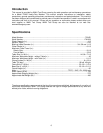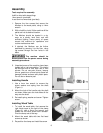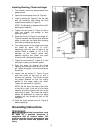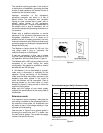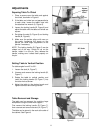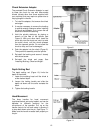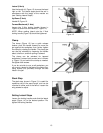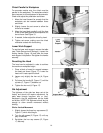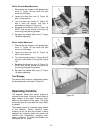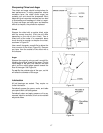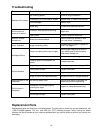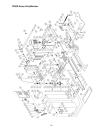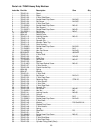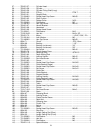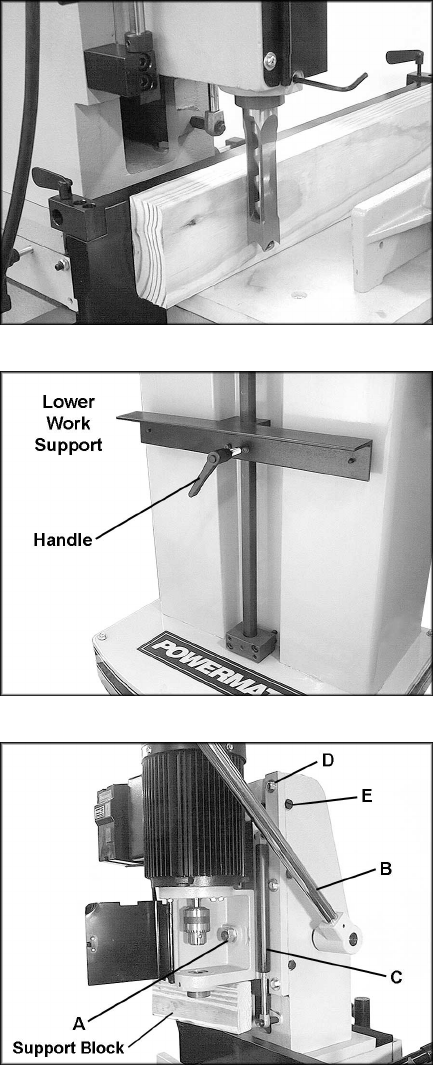
14
Chisel Parallel to Workpiece
For accurate mortise cuts, the chisel must be
parallel to the workpiece. The workpiece should
be cut square for this adjustment to be accurate.
Check and adjust this parallelism as follows:
1. Move the head forward far enough that the
workpiece can be inserted between fence
and chisel.
2. Slightly loosen the set screw to allow the
chisel to be rotated.
3. Move the head back carefully until the face
of the chisel rests against the workpiece, but
do not force. See Figure 15.
4. If needed, further adjust the chisel by hand.
5. Tighten set screw, making sure the chisel
maintains contact with the bushing.
Lower Work Support
To use the lower work support, remove the table
(see “Table Removal and Storage”). Loosen the
locking handle (Figure 16) and slide the lower
work support into position. Re-tighten the handle
securely.
Re-setting the Head
The head can be adjusted in order to achieve
the maximum workpiece height.
1. Place a block of wood for support between
the head and fence (Figure 17). Lower the
head until it rests upon the block.
2. Loosen only slightly the hex nut (A, Figure
17).
3. Pull down the handle (B, Figure 17) until the
cylinder (C, Figure 17) bottoms out.
4. Tighten the hex nut (A, Figure 17).
Gib Adjustment
The tightness of the gibs has been set at the
factory and should not require adjustment. As
parts wear through long-term use, or “play”
develops in the gib, adjustments can be made
as follows. NOTE: Gib tightness should be just
enough to allow smooth movement without
binding.
Gib for Vertical Movement
1. Slightly loosen the three hex cap screws (D,
Figure 17) which hold the gib.
2. Turn the gib screws (E, Figure 17) until any
play is removed.
3. Re-tighten the hex cap screws (D, Figure
17) securely.
Figure 15
Figure 16
Figure 17



